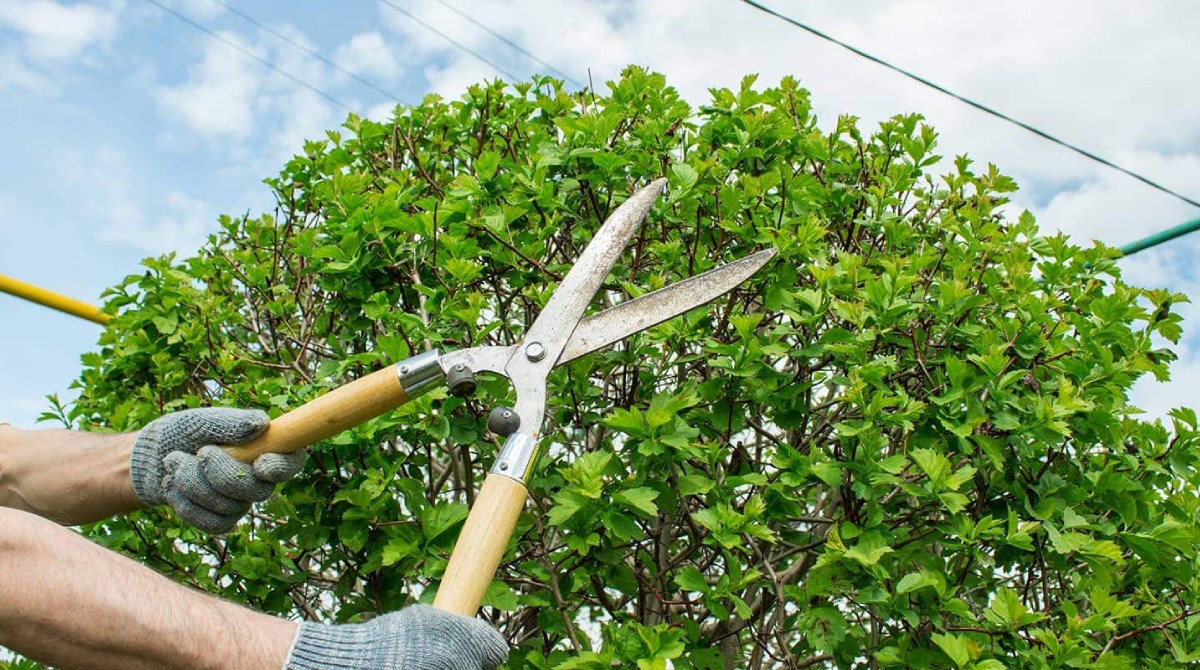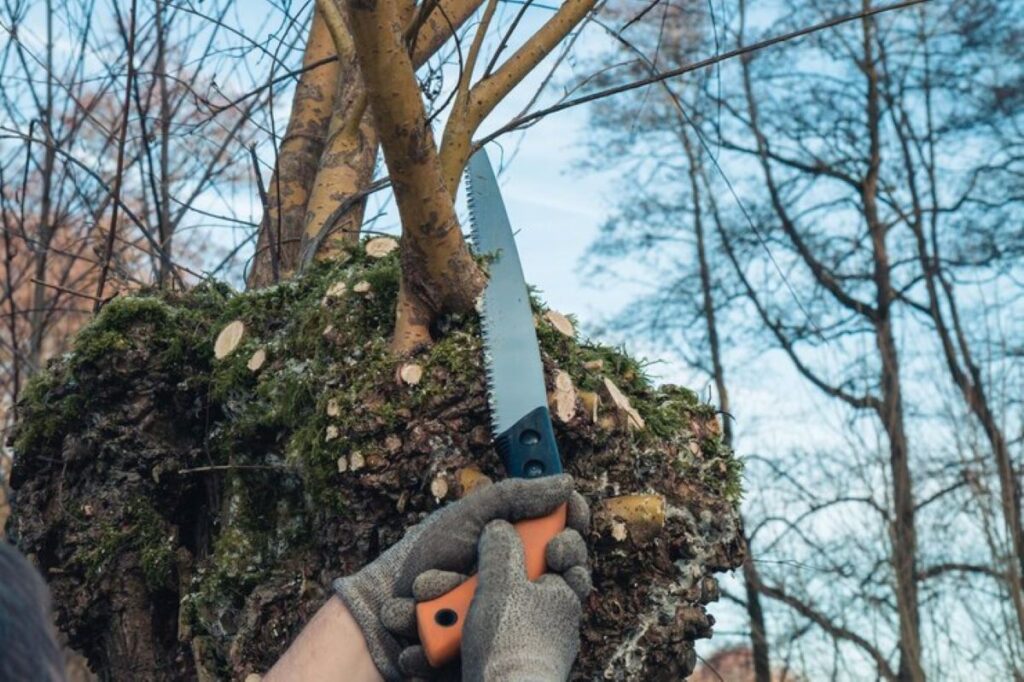Phone:
(701)814-6992
Physical address:
6296 Donnelly Plaza
Ratkeville, Bahamas.

Tree pruning is a vital aspect of maintaining the health and aesthetics of trees in both residential and commercial landscapes. Understanding the principles and practices of tree pruning can empower property owners to make informed decisions about their flora, ensuring that they flourish for years to come.
Tree pruning service involves the selective removal of specific parts of a tree, including branches, buds, and roots. This practice is crucial to maintaining tree health and enhancing its structure. Proper pruning techniques can lead to a stronger, more aesthetically pleasing tree.
From a scientific perspective, pruning influences a tree’s physiological processes. When branches are removed, the tree experiences a series of responses, including increased photosynthesis and improved air circulation within its canopy. Pruning stimulates new growth by redistributing energy to different sections, allowing trees to thrive.
Moreover, pruning can significantly affect a tree’s overall shape and structure. Trees can become weak if they grow amorphously, leading to structural failures. Regular pruning contributes to a balanced growth rate, promoting a stronger foundation and a more appealing appearance. Additionally, pruning can help prevent the spread of diseases and pests by removing infected or infested branches, thus safeguarding the tree’s health and longevity.
To achieve optimal results, a variety of tools are employed in tree pruning. Common tools include hand pruners, loppers, and saws, each designed for specific branch sizes and types. Professionals also utilize safety gear like gloves and goggles to prevent injuries during the pruning process.
Techniques vary based on the needs of the tree and the desired outcome. Common methods include thinning, heading, and rejuvenation pruning. Each of these techniques serves unique purposes, from reducing tree density to encouraging new growth. Understanding these techniques allows for more effective tree care. For instance, thinning involves selectively removing branches to increase light penetration and air circulation, which can enhance the overall health of the tree. Meanwhile, rejuvenation pruning is often applied to older or overgrown trees, cutting them back significantly to stimulate fresh growth and restore vitality.
The health of a tree is significantly influenced by its upkeep, and pruning plays a crucial role in this regard. Regular pruning helps mitigate various health issues that trees face throughout their lifespan.
One of the primary benefits of tree pruning is the prevention of disease and pest infestations. By removing dead or diseased branches, the risk of infection spreading to healthy parts of the tree is minimized. Pest-infested areas can also be effectively managed through pruning, reducing the overall pest population.
Additionally, proper pruning helps maintain an open canopy, allowing for better air circulation and sunlight penetration. This environment is less favorable for certain diseases and pests, creating a healthier habitat for trees. Moreover, pruning can help identify potential problems early on, such as signs of fungal growth or unusual insect activity, enabling proactive measures to be taken before they escalate into more significant issues.
Regular pruning sessions contribute to a tree’s longevity. By ensuring that there are no densely packed branches, trees can grow more vigorously. This practice encourages healthy leaf production, resulting in improved nutrient absorption.
Furthermore, pruning assists in shaping a tree’s growth pattern, supporting the development of a strong trunk and well-structured branches. Such structural integrity is critical for the tree’s longevity and its ability to withstand environmental stressors. In addition to these benefits, pruning can also enhance the aesthetic appeal of a tree, making it a more attractive feature in landscaping. A well-pruned tree not only looks healthier but can also increase property value and provide a more enjoyable outdoor experience for homeowners and visitors alike. By carefully selecting which branches to trim, arborists can encourage a balanced and pleasing shape that complements the surrounding environment.
Beyond personal and economic benefits, tree pruning has environmental implications that should not be overlooked. Understanding the broader impact can enhance the justification for regular pruning services.
Tree pruning can affect local wildlife, creating a delicate balance between maintenance and habitat preservation. While pruning can enhance the health of the tree, it also alters the environment for birds and insects that depend on the tree for food and shelter.
It is crucial to time pruning activities to avoid disrupting nesting seasons. By being mindful of wildlife, property owners can contribute positively to the ecosystem while ensuring the health of their trees. Additionally, certain species of birds, such as woodpeckers and owls, rely on dead or decaying branches for nesting and foraging. Therefore, leaving some branches intact can provide essential habitats for these species, promoting a rich biodiversity within the local environment.

Pruning contributes to larger ecological systems by enhancing tree health, which in turn supports various organisms. Healthy trees play a significant role in carbon sequestration, helping to mitigate climate change. Furthermore, robust tree populations foster biodiversity by providing habitats for numerous species.
Moreover, well-pruned trees are less susceptible to diseases and pests, which can lead to a healthier urban forest. This is particularly important in urban areas where green spaces are limited. By maintaining the vitality of trees through proper pruning techniques, we can ensure that these trees continue to provide essential services, such as air purification and temperature regulation, which are vital for urban wildlife and human populations alike. The interconnectedness of tree health and ecosystem stability underscores the importance of responsible tree care practices.
In summary, regular tree pruning not only benefits individual trees but also supports the overall health of our ecosystems, promoting a sustainable environment for future generations.
Investing in tree pruning services not only improves the health of trees but can also bring considerable economic advantages. Trees that are well-maintained tend to enhance property aesthetics and value.
Properties with beautifully maintained trees often attract higher market values. Well-pruned trees enhance curb appeal, making properties more attractive to potential buyers or tenants. This visual enhancement can translate into a significant ROI (return on investment) for property owners.
Additionally, properly pruned trees are generally healthier and safer, reducing concerns for potential buyers regarding maintenance costs and hazards. Thus, investing in tree care translates into long-term financial benefits.
Moreover, the presence of mature trees can create a sense of tranquility and well-being, which is increasingly valued in today’s fast-paced world. Studies have shown that neighborhoods with well-maintained greenery often see lower crime rates and higher community engagement, further enhancing property desirability. The psychological benefits associated with living near healthy trees can also lead to a more stable property market, as buyers are willing to pay a premium for homes that offer not just shelter, but a serene living environment.
Preventive pruning can save property owners substantial costs associated with tree failure. By removing weak branches and addressing potential issues before they lead to damage, owners can avoid costly repairs and insurance claims.
Furthermore, regular maintenance decreases the likelihood of falling branches causing injury to people or damage to property during storms, making it a prudent investment for peace of mind and financial stability.
In addition to the immediate financial implications, preventive pruning can also prolong the lifespan of trees, ensuring that they continue to provide shade, beauty, and ecological benefits for years to come. Healthy trees contribute to energy savings by providing natural cooling in the summer, which can significantly lower air conditioning costs. This not only enhances the economic value of a property but also promotes environmental sustainability, making tree care a wise choice for both personal finances and community health.
Deciding on the right tree pruning service is essential for ensuring that the job is done correctly and safely. As tree care involves complex knowledge and skills, selecting experienced professionals is crucial.
When seeking a tree pruning service, consider several key factors: experience, certifications, and insurance coverage. A reputable service will have a team of trained arborists skilled in the latest pruning techniques. These professionals should be well-versed in understanding the specific needs of different tree species, as improper pruning can lead to long-term damage or even death of the tree. Additionally, look for services that prioritize ongoing education, as the field of arboriculture is constantly evolving with new research and techniques.
Furthermore, checking references and customer reviews can provide insight into the quality of service offered. A company with a strong reputation typically reflects reliability and professionalism. It’s also beneficial to inquire about their approach to tree health; a good service will not only focus on aesthetics but also on the overall well-being of the tree, including disease prevention and pest management. This holistic approach can make a significant difference in the health of your landscape.

Property owners should be cautious about hiring the first company they find without conducting thorough research. One common mistake is neglecting to confirm whether the service provider is insured and licensed, which can lead to liability issues. An unlicensed company may not adhere to industry standards, putting your property and the health of your trees at risk. Always ask for proof of insurance and verify their credentials to ensure you are hiring a qualified professional.
Another mistake involves disregarding the importance of asking for detailed estimates and comparing different service providers. Ensuring transparency in pricing helps avoid unexpected costs later on. By taking the time to evaluate options, property owners can ensure that they select the best tree pruning service for their needs. Additionally, don’t hesitate to ask about the specific techniques they plan to use and how those methods will benefit your trees. Understanding their approach can give you confidence in their expertise and help you make a more informed decision.
Moreover, it’s wise to consider the timing of tree pruning services. Different trees have specific seasons when they should be pruned for optimal health and growth. A knowledgeable service will be able to advise you on the best times to prune based on the species of your trees and local climate conditions. This attention to detail can significantly enhance the effectiveness of the pruning process and ensure your trees flourish for years to come.
Related : Tree Pruning in Sydney: Benefits of Hiring Local Experts